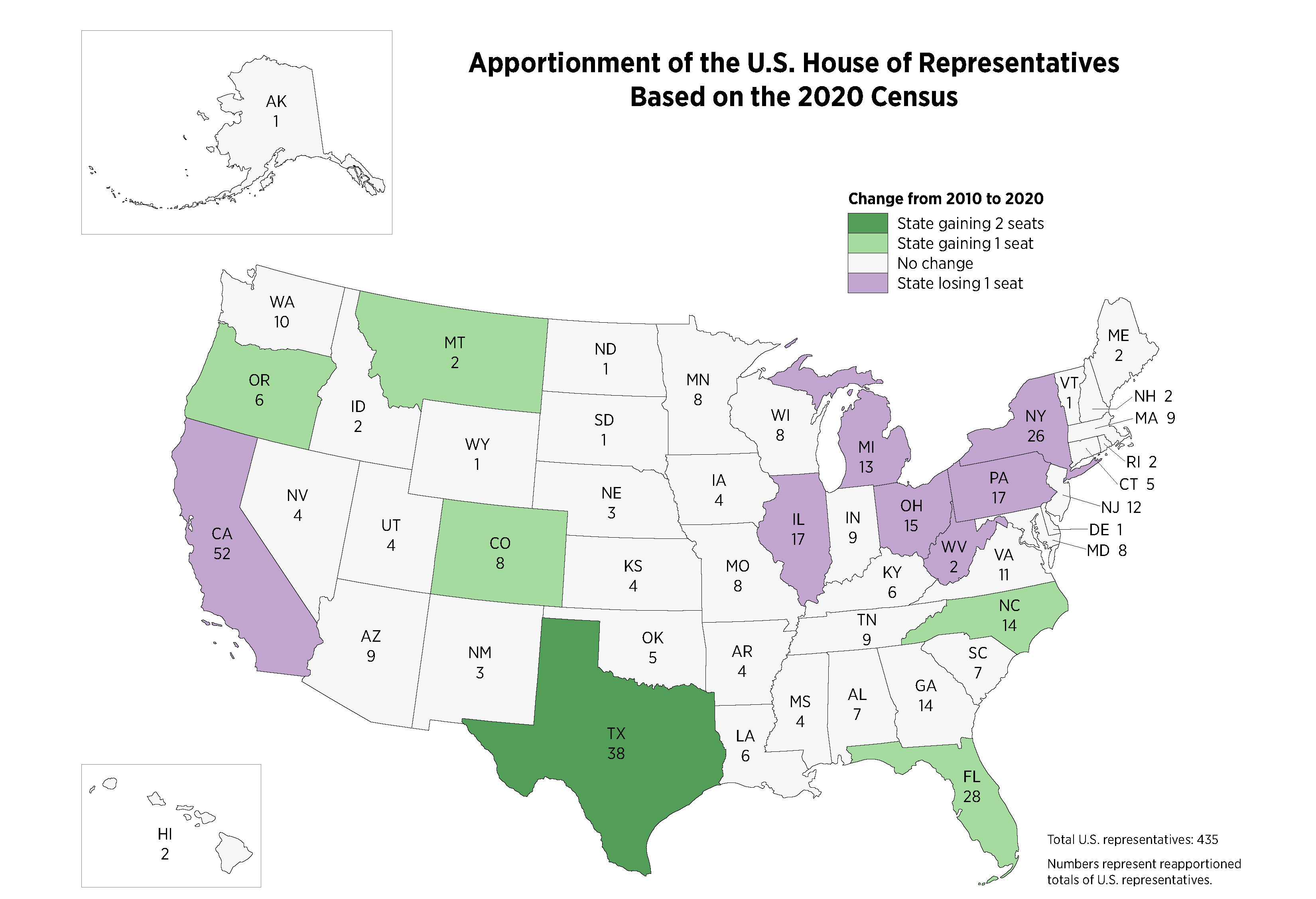The U.S. Census Bureau released the census counts on August 12. The data provide the fifty states, the District of Columbia, and Puerto Rico with population counts to use when redistricting (redrawing of congressional and state legislative district boundaries). With the new Census, the apportionment of state representation in the House of Representatives has been determined (see map).

Figures show what we already know: The United States is more diverse than ever! Population growth is being driven by growing numbers of Latino, Asian, and multiracial residents. Nationwide, the battle is on to redraw district lines that reflect the population shifts from rural areas to urban centers and generally from northern states to southern states. The stakes are high—the results of redistricting will lock in our political power map until 2030.
Endgame: Political Power
Redistricting has always been about political power. Because politicians have consistently assigned themselves responsibility for drawing those lines, the temptation to draw themselves into office, social status, and political power becomes irresistible to many.
The redistricting process will be especially contentious this time around because of our polarizing political differences and growing diversity. The desire to maintain their seats has already caused many state legislatures to pass voter suppression laws that help them stay in power. Now they can use a once-in-a-decade opportunity to pound a nail into the coffin of democracy, suppress the popular vote, and gain control of Congress, irrespective of the people’s will or vote.
But it doesn’t have to be this way.
Citizen Input
In California, we the people passed Proposition 11, the Voters FIRST Act, in 2008. The law allowed for the creation of a fourteen-member Citizens Redistricting Commission. The 2020 Citizens Redistricting Commission has been formed and is required to ask for public input, to hold a minimum of four public hearings, and to consider communities of interest when “drawing the lines.”
The law is on our side—but the commissioners do not know where your community starts and ends or what your concerns are. You must tell them! Los Angeles County likewise has seated a Citizens Redistricting Commission, which is ready to take public input when designing our supervisorial districts. Consistent with state law, public input hearings are happening now.
City, library, and school district boundaries are also being drawn—primarily by elected officials—right now. A few have already approved contracts with agencies that specialize in drawing district maps; they are just waiting for the adjusted census data. By law, redistricting officials must also hold public hearings to receive your input before approving the district boundaries.
Why Get Involved?
Don’t you want to know how your congressional district, your state assembly and senate districts, your supervisorial district, and your city council district will be drawn? Who will represent your interests or those of your community? Whose voice will be heard? Whose vote will count, and whose vote will lack power? Well, it’s up to you to determine the answers to these questions—by taking action now.
Taking action means getting informed, first by understanding the stakes at play—this brief, entertaining explanation of gerrymandering from NBC will help. Visit the Los Angeles County redistricting website to learn about communities of interest (COIs) and input tools offered by the Citizens Redistricting Commissions of the State & L.A. County to map your community and to tell your story. Involve your family, friends, and neighbors.
Think of all the advocacy you do on economic development, housing, rent control, transportation, education, and immigration with colleagues at work and others you partner with. Help them map their communities to ensure equal representation. The next midterm election results will be determined by the lines being drawn today. Visit LWV-PA’s Hot Topics web page to find out how to take action.
—Martha Y. Zavala